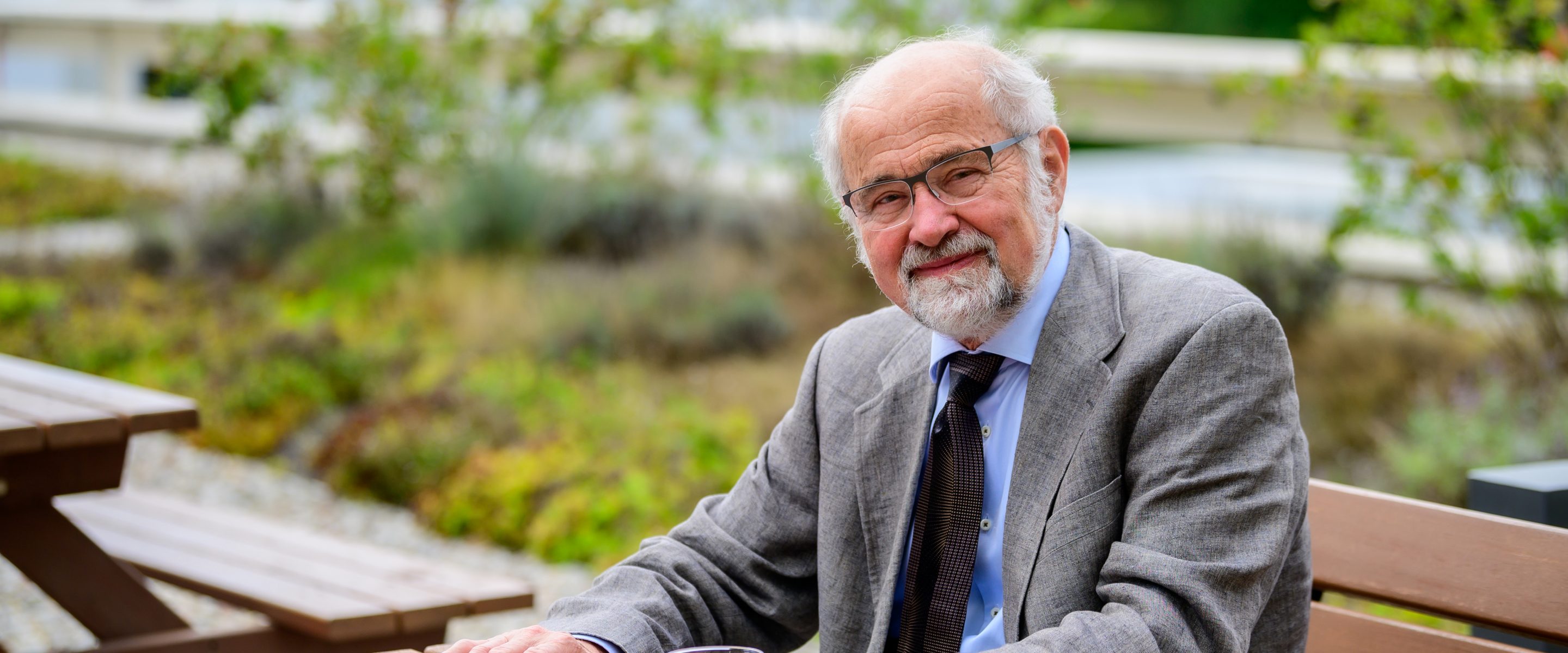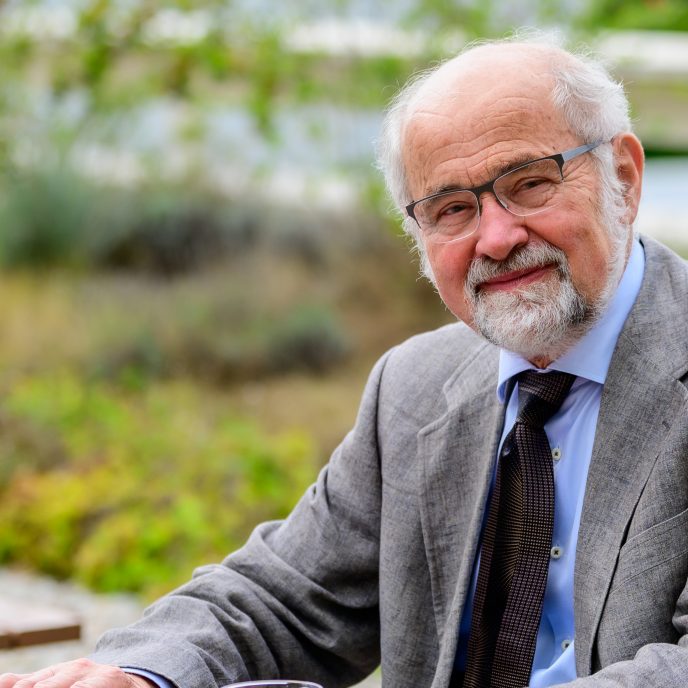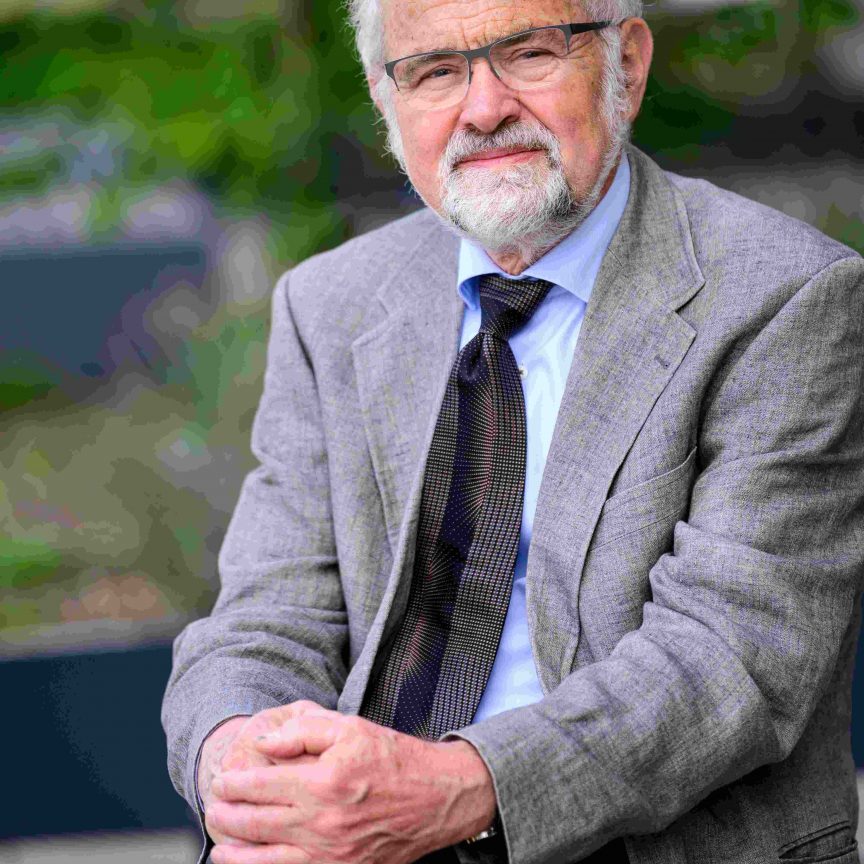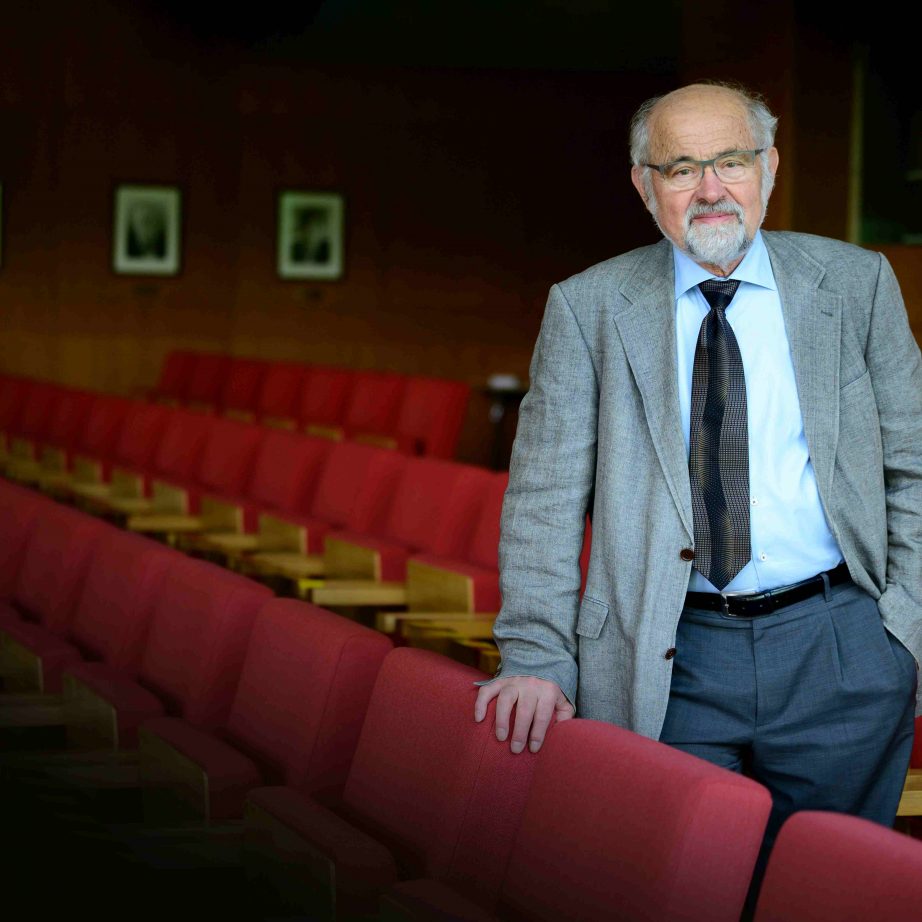

„I thought I had missed my chance“
Image: Irene Böttcher-Gajewski/Max-Planck-Institut für biophysikalische Chemie
During his doctorate at the Max Planck Institute for Psychiatry he met the physician Bert Sakmann. Together they had many lively discussions, became friends and together they pursued research into the detection of single ion channels in cells, for which they received the Nobel Prize in 1991. Since 1983, Erwin Neher has been Director at the Max Planck Institute for Biophysical Chemistry in Göttingen and Head of the Membrane Biophysics Department.
In this interview, he explains why he wanted to study Biophysics before the subject even existed, how he experienced the student movement in the USA in 1968 and how the Nobel Prize gave him freedom.
I grew up in Buchloe, a small town in Bavaria, 70 km west of Munich. Our house was situated in a large, park-like garden where I spent hours alone observing plants and animals and where I was familiar with almost every pebble. At the same time I was very interested in technical things: radios, clocks – whatever I could get a hold of, I took apart and tried to reassemble. Later in high school we had very good teachers and in the afternoons we sat together in working groups and for example built a sundial and experimented with telescopes. That was all very inspiring.
And then you had to decide whether to study Biology or Physics?
Exactly. One thing that I was particularly interested in was the nerve-impulse. The fact that there are electrical signals in our body. I wanted to find out more about that. Very soon I wanted to go into this direction and pursue a career as a researcher in Neurobiology or Biophysics. At that time, however, Biophysics was not yet a field of study here: I had to choose between Physics and Biology and then started with Physics, but I had the clear goal of adding Biophysics later.
You then went to TUM to study?
Yes, in the fall of 1963. Because of my interest in technology it made sense. Other than the typical German universities, TUM had a rather tight schedule with a lot of problem-oriented coursework supplementing the regular lectures. Such training was of great help for many aspects of my subsequent research work.
What is the first thing that comes to your mind when you think back at your time as a student?
What I remember very well is the reading room in the Arcisstraße library. A large room with desk lights, each of which only illuminating one table. I found this to be a very good environment for reading and doing exercises. I spent a lot of time there. However, the sixties in general were a very turbulent time.
Are you still in touch with fellow students from TUM?
We used to be a group of three in the first semesters and spent a great deal of time together. We also lived in the same dormitory. One of them is the mathematician Peter Deuflhard and I have still been visiting him in Berlin in the past years.
Then, in the fifth semester of your diploma studies, you went to the USA. What led to that?
After my intermediate examination, my Fulbright Scholarship (one of the most prestigious scholarships in the world; editor’s note) was granted, which meant I was able to go to the USA. Here I was hoping to do research in the field of Biophysics. This turned out to be the case. Before my departure, I had reached out to Professor Edgar Lüscher: he was from the USA and had recently been called to TUM. He recommended three universities to me to mention in my application. During my year at the University of Wisconsin in Madison, I was fully integrated in a biophysical laboratory involved in low angle X-ray scattering. My own project, directed by Prof. W.W. Beeman, was an early attempt at producing molecular beams of macromolecules for mass spectrometry. Even though I did not manage to accomplish this in just a little more than a year, I was still able to obtain a Master of Science.
Attending a university in the USA in the late sixties: tell us about the impressions you took from that time.
Socially, this was a major new experience for me. My image of the USA was shaped by the American military, which I knew from the postwar years in Germany. I experienced the USA as a very multifaceted country – in terms of society, but also in terms of landscape. At that time the hippie revolution was just starting, so there was a lot going on on campus (laughs
On my return, I deliberately looked for a thesis project in Biophysics, preferably related to nerve excitation. Fortunately, my search led me to the Max Planck Institute for Psychiatry, where H.D. Lux was investigating synaptic mechanisms in motoneurons and ion currents in snail neurons. We agreed on a project on voltage-clamping snail neurons. Professor Heinz Gerischer from the Institute of Electrochemistry at TUM was willing to consider such a project for a dissertation. In his lectures he also taught me the necessary fundamentals in Electrochemistry.
Did it take a lot of persuasion to convince Professor Gerischer of your thesis topic? After all, it was a completely new field that you wanted to till here.
The topic was certainly not entirely within the scope of Professor Gerischer’s institute. But when I applied to the Chair of Electrochemistry, he was on a sabbatical in the USA and I talked to his senior assistant: that was Gerhard Ludwig Ertl, who later won the Nobel Prize in Chemistry. He liked the topic and then wrote a letter to Professor Gerischer – there was no email at the time – and luckily he agreed.
When you worked at Hans-Dieter Lux’s laboratory, you met the physician Bert Sakmann, who also did his doctorate there.
Having finished his medical degree, Bert was very interested in the basic neuronal mechanisms that we were studying in Dieter Lux’s laboratory. We had many lively discussions and became friends. Frequently, the question was whether it would be possible to measure the extremely small changes in current that one could, according to conventional beliefs, expect when membrane pores, which were still hypothetical at the time, open and close. Based on his interests, Bert decided to move to London to work in Sir Bernhard Katz’s biophysics laboratory. We met again in Göttingen in 1973, where I had joined a laboratory for physical chemistry to gain experience in measuring the smallest currents on artificial membranes . Bert brought with him the experience on the neuromuscular junction and it did not require much discussion to agree on a collaboration, aiming at the measurement of single channel currents. In 1976 we were able to publish the first measurements of this kind, while I spent a year in the laboratory of Charles F. Stevens at Yale University. When I returned, we were able to set up independent “Young Investigator Laboratories” with the support of our Heads of Department Hans Kuhn and Otto D. Creutzfeldt. This was very helpful for close collaboration, and allowed us to attract a number of excellent postdoctoral fellows. Together we perfected the technique, and developed the different recording configurations.
Were there ever moments when you didn’t really know how to proceed?
We were extremely lucky that what we had set out to do had worked out by and large. But of course there were times when we were stuck. Moments that were frustrating, too. Most of the time we would then take a break and try to study these currents that we wanted to measure in very high resolution in a different way. This kept us in high spirits because these alternative measurements worked out quite well and could be published. Gradually the measurements improved and what we were actually looking for became apparent, namely small, step-by-step changes in the membrane currents. That’ s when we knew that we were on the right track.
You have never thought about giving up?
Well, research is always like that. You come up with something, you have certain expectations of an experiment, but oftentimes the respective result does not materialize. This probably happens even more often than your expectations being met. And then you are frustrated. But at some point you have an idea, you could look at it again from a different angle or you could change certain conditions in the experiment or do something completely new. And this idea, this “that’s how it could work”, gives you wings and you carry on.
In 1991 you received the Nobel Prize for your research together with Bert Sakmann. Did that come as a surprise to you?
At the time of the call, yes. I did not think about it at all. Of course colleagues told us that we had been nominated, several years in a row. A year before the award, in 1990, which was quite conspicuous, I was invited to Sweden four or five times to give lectures. Sometimes the discussions after the lectures resembled some kind of interrogation (laughs). But when the Nobel Prize didn’t come in October 1990, I closed the chapter. I thought: “Now you’ve missed your chance.”
Looking back, would you say that the Nobel Prize has changed a lot for you?
In the first year after the Nobel Prize you are naturally subjected to all kinds of demands. You can’t imagine the variety of things people think a Nobel Prize winner is able to do and what he could be roped in for (laughs). You have to learn how to handle that. After some time I managed to be relatively restrictive so that I could continue with my own research.
And what is it like now?
When you approach retirement age, you enter the phase where the Nobel Prize really helps you. The best thing about the Nobel Prize is that it more or less guarantees that you can continue to work as long as you want. And that’s why, at the age of 76, I’m still sitting here in my office in Göttingen. Otherwise I probably would have been home ages ago (laughs).
To conclude, let’s take a look into the future: which scientific problem would you like to see solved soon?
From the point of view of Neurobiology these are of course the neurodegenerative diseases: it would be wonderful to finally find a cure here. Neurobiologically I am also very interested in research on motivation and well-being. A lot of progress has been made in this field recently. The bottom line is that if we understand what motivates us, what drives us, then perhaps we can find ways and means to prevent depression and improve the overall well-being of people. That would be the best possible result: research leading to a real improvement in people’s subjective well-being.
Erwin Neher grew up in Buchloe, Bavaria with his two sisters. His mother was a teacher and his father involved in the administration of a dairy company. From 1963 on, he studied Physics at the then “Technische Hochschule” in Munich. With the help of a Fulbright Scholarship, he went to the University of Wisconsin in the USA in 1966, where he earned his Master’s degree. After his return to Munich, he did his doctorate at TUM and the Max Planck Institute for Psychiatry, where he met physician Bert Sakmann. From 1976 Erwin Neher and Bert Sakmann had a joint laboratory at the Max Planck Institute for Biophysical Chemistry in Göttingen, where they established small research groups with just a few members.
Between 1983 and 2011 Erwin Neher was director of the same institute and Head of the Department of Membrane Biophysics. In 1991 he received the Nobel Prize in Physiology or Medicine together with Bert Sakmann for their development of a method for the immediate detection of currents through individual ion channels in cell membranes. Both scientists played a pivotal role in the development of this so-called patch-clamp technique, which forms the basis of their discoveries. Erwin Neher is married and has five children.

